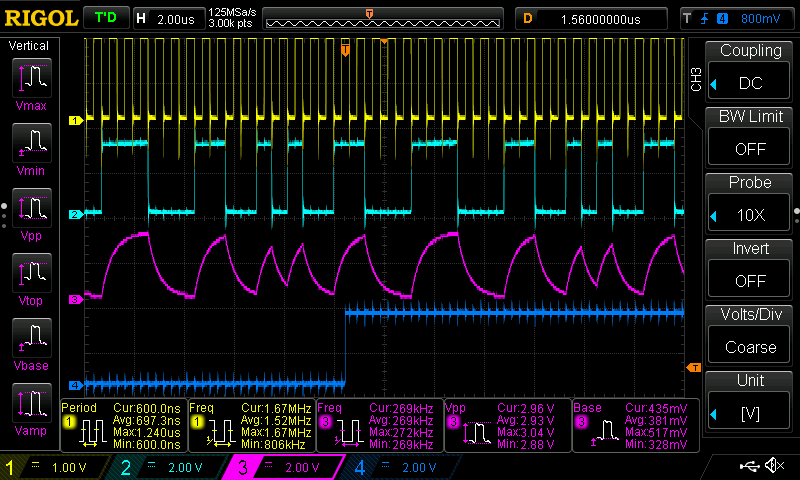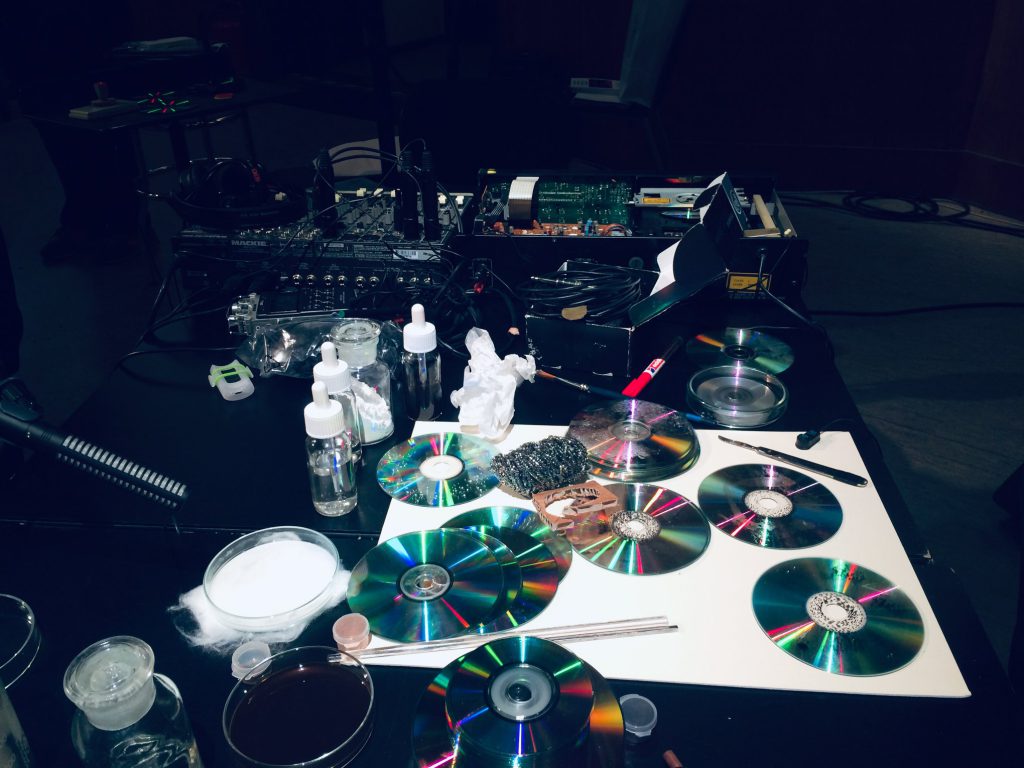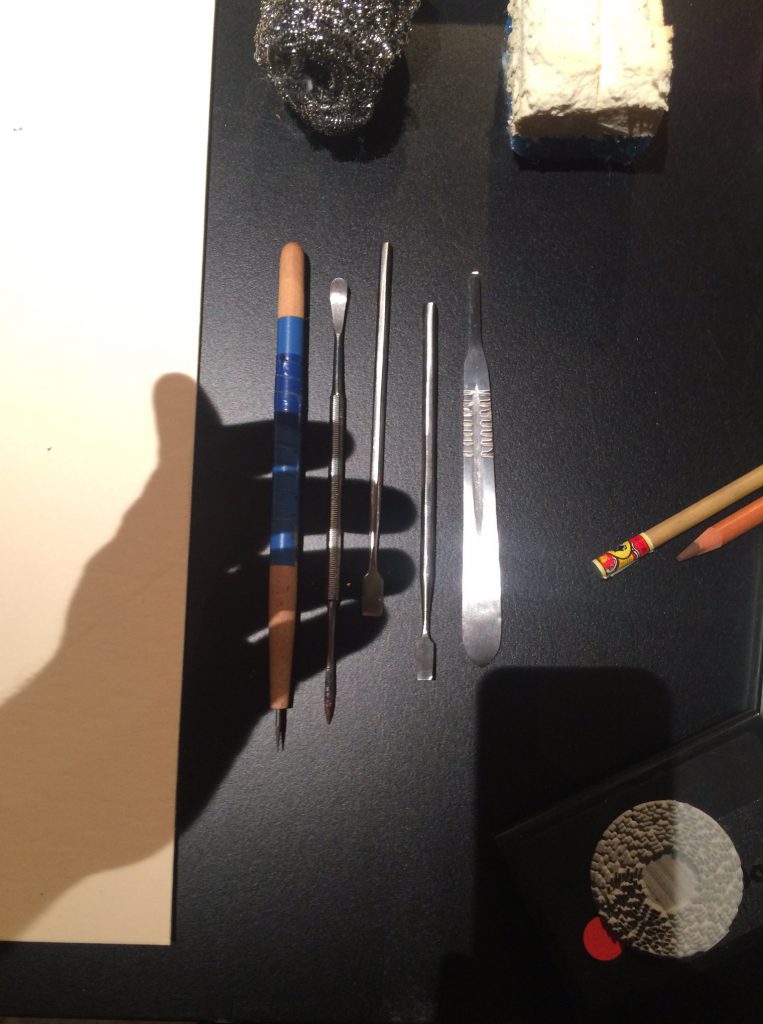Posts Tagged: performance
Re_Mole_10, October 26, Reaktor
(S)Low Frequency Orchestra together with Wolfgang Mitterer and Jérôme Noetinger
REAKTOR, Geblergasse 40, 1170 Wien, Austria
26.10.2020, 19:30
Zehn Jahre zu spät feiern wir die Veröffentlichung unseres Albums “Mole” und unterziehen es dabei einer Neubetrachtung.
“Mole” ist aus einer improvisatorischen “Kollision” hervorgegangen, einem ungeprobten und dennoch bühnenöffentlichen Aufeinandertreffen des Low Frequency Orchestra mit Wolfgang Mitterer. Über die Jahre seither blieben manche Eindrücke und Klänge in Erinnerung, vieles wurde vergessen, weiterentwickelt, abgerieben. Im REAKTOR nehmen wir den Faden wieder auf. Wieder wird die Aufführung als Kollision angelegt sein, mit einem weiteren Akteur, dem Tape-Künstler Jérôme Noetinger.
Das Neue ist auch immer ein Produkt des Alten.

A cooperation between SKE, REAKTOR and Rotting sounds.
Low Frequency Orchestra
Angélica Castelló — Paetzold, tapes, radios
Maja Osojnik — Voice, Paetzold, electronics
Matija Schellander — Kontrabass
Thomas Grill — Electronics
+
Wolfgang Mitterer — Electronics
Jérôme Noetinger — Revox, tapes, electronics
“Noise Shaping” at Musikprotokoll festival, October 8, Graz
Aloïs Yang & Andreas Trobollowitsch / Rojin Sharafi / Thomas Grill @ Hidden Dome
Thomas Grill gibt mit Noise Shaping einen Einblick in das Forschungsprojekt rotting sounds, das sich mit der Vergänglichkeit von digitalem Klang im sozialen, technologischen und zeitlichen Kontext beschäftigt. Ein zentraler Forschungsgegenstand ist die Repräsentation von Klang als 1-bit-Datenstrom, der die Brücke zwischen digitalen und analogen Signalen schlägt. Der Begriff Noise Shaping steht dabei für den voluminösen Rauschhintergrund, der als Träger der darin verborgenen Klänge verwendet wird. Aloïs Yang and Andreas Trobollowitsch spannen mechanisch erzeugte Klänge in ein komplexes digitales Feedback-System ein; found objects kommen ebenso zum Einsatz wie natürliche Substanzen und performative Raumvermessungen. Und Rojin Sharafi, die ursprünglich aus dem Iran kommt und seit einigen Jahren in Österreich lebt, widmet sich in ihrem Stück der „kulturellen Hegemonie, kulturellen Hybridität und dem kulturellen Überleben“, jenen Stimmen also, die im Kampf um die kulturelle Vorherrschaft gezielt unterdrückt werden. Für ein immersives Klangerlebnis bei Hidden Dome sorgt die 50-Kanal Ambisonics Audioanlage des Dom im Berg, für die die drei Auftragswerke konzipiert wurden.
October 8, 19:30pm
Dom im Berg, Schloßbergplatz, A-8010 Graz
Performance at Sound Campus, Ars Electronica Festival Linz, September 11
Thomas Grill, Till Bovermann and Kathrin Hunze will perform “merge and dissolve”, an audiovisual performance concept in the SOUND CAMPUS program, part of the Ars Electronica Festival 2020.
This performance involves three interactants, two predominantly working in the audio domain (Thomas Grill and Till Bovermann) and one focusing on a visual counterpart (Kathrin Hunze). We generate and exchange streams of 1-bit audio, a signal representation with properties of both the digital and analog domain that we have already been investigating in the artistic research project “Rotting sounds – Embracing the temporal deterioration of digital audio” (FWF PEEK AR445-G24). With simple switchboard matrix devices, we channel such bit streams between the individual performers and through simple processing modules, like delays, logical operators, etc., generating feedback and interferences on the way. These phenomena are made audible and are also mirrored by a visual representation of particle streams, forming directed jets and point cloud aggregations.
11. September 2020 – 20:10 – 20:35
Hauptplatz 6, Glashörsaal D (H6.DG.04)
4020 Linz, Austria

1-bit audio: Testing audio hardware
For an upcoming performance at the Ars Electronica Festival 2020 SOUND CAMPUS, we are testing hardware to interconnect 1-bit audio streams.
For that purpose, we are using an STM32F4 Discovery Board to generate 1-bit audio streams, sent through a Future Sound Systems MTX9 point pin matrix (Figure 1) as often found in modular synthesis systems.
The software used on the STM board to efficiently generate 1-bit audio streams using DMA transfer over an SPI interface is an offspring of our DADA hardware development efforts.

The FSS MTX9 can be used as passive hardware (only 1-to-1 connections), or using the MTX9A buffer board to sum over input busses.
In passive mode (Figure 2), the bandwidth is sufficient to come close to 1 MHz bit rate which allows 32-fold oversampling at usable PCM audio rates.

For active mode (using the buffer board MTX9A, Figure 3), the hardware introduces low-pass filtering, reducing the audio bandwidth to around 100 kHz. This is good enough for high quality analog audio, but not for 1-bit digital audio at high bit rates.

Clearly, it must be noted that the summing function over inputs is not strictly meaningful for 1-bit signals, where some kind of post-processing needs to bit applied to return to single bits.
do trans-Art_44 performance, February 13
Rotting sounds will be guest at the trans-Art series organized by Astrid Rieder. Thomas Grill will perform “musical materials”, in this case a worn concert zither explored with digital music signals.
trans-Art is a real-time dialogue between two or more artists. It breaks through conventional boundaries between different genres of art and enables a deeper understanding and reception of abstract art on several layers. (Astrid Rieder)
Thursday, February 13th at 7:30pm
studio Bundesstraße 37, in Wals-Siezenheim.
Art’s birthday 2020
We had a great evening at the Kunstradio Art’s Birthday Party! The audio CDs we produced live were given away as presents to the audience, hopefully delighting Art too.
Our performance is aired on Kunstradio-Radiokunst, radio ORF Ö1 on February 26 2020 11pm.
Art’s Birthday 2020, January 17, ORF Kunstradio
Rotting sounds (Thomas Grill, Almut Schilling, Tobias Leibetseder) take part in this year’s celebration of Art’s Birthday with a CD audio production line. We will live generate digital audio on compact discs by mechanical and chemical means, and finally subject them to a testing procedure.
Art’s Birthday 2020 – 1,000,057 Years of Art
In 1963 the French Fluxus artist, Robert Filliou, declared January 17 to be the 1,000,000th birthday of art which for some decades now has been celebrated worldwide. As in the previous years, in 2020 artists all over the world will organise a networked birthday party for art.

Performances and gifts by:
GOGO! von Michael Baumgartner mit Omid Darvish und Reza Tavakoli
Heavy Mental Superhereos (Runar Magnusson, Josef Trattner und Esther Vörösmarty)
Ars_Poetica (Magdalena Hahnkamper und Bernd Satzinger)
Heya Netzwerk (Nour Sokhon in Berlin, Jilliene Sellner in Wien, Yara Mekawei in Kairo und Zeynep Ayşe Hatipoğlu in Istanbul)
Instant Places (Laura Kavanaugh und Ian Birse)
Rotting Sounds
Milan Mijalkovic von Makedonien
Rdeča Raketa (Maja Osojnik und Matija Schellander) mit Patrick K.-H.
Rojin Sharafi
Susanne Schuda
Presentation: Frida Kahlo (Rosanna Ruo)
On site: 08pm – 11pm,
RadioKulturhaus Wien, Argentinierstrasse 30a, A-1040 Vienna.
On line: kunstradio.at, http://oe1.orf.at/konsole, artsbirthday.net, http://artsbirthday.ebu.ch
On air: Ö1 Radiokunst – Kunstradio live 10:08pm – 01.00am
Materialities symposium, Sussex University, Brighton, December 4+5
Thomas Grill and Till Bovermann will represent activities of the Rotting Sounds project within a fast-paced symposium on the subject of materialities in music making.
Duo Performance @ the Rosehill Arts: December 4, 9pm
Thomas Grill – Musical material
Probing of fragments of deceased instruments by use of digital sound. Sounding the materials, shapes, resonances – tracing remnants of a musical life.
Till Bovermann – Buffer manipulations
Probing and fragmentation of deceased digital sound. Sounding the materials, shapes, resonances – tracing remnants of a brief ephemerality.
Masterclass and Round table/panel discussion: December 5, 10-13h
Notions of materiality and influence on practice
Topics relating to notions of materiality and influence on practice are discussed by a panel of academics/composers and performers. This promises to be a lively debate relating to media archeology, liveness and audience perspective.
Participants include Evelyn Ficarra, Tom Richards, Till Bovermann, Thomas Grill and others.










